Walter Crane et la littérature de jeunesse (1)
12 janvier 2012 11:56 0 messages
La lecture de l’autobiographie de cet artiste anglais né en 1845 me procure un tel plaisir depuis le début de la semaine que je vais essayer de vous faire partager mes réactions.
![]() épisode 2
épisode 2
![]() épisode 3
épisode 3
![]() épisode 4
épisode 4
avant-propos
![]() Merci F. Fièvre pour le lien vers An artist’s reminiscences et ses six cent pages...
Merci F. Fièvre pour le lien vers An artist’s reminiscences et ses six cent pages...
![]() Merci Nathalie pour la prise de captures d’écran : la touche "Imprim’Ecran"
Merci Nathalie pour la prise de captures d’écran : la touche "Imprim’Ecran"
![]() Merci C. Flages pour la technique de prise de note simultanée, en jouant avec les tailles de pages.
Merci C. Flages pour la technique de prise de note simultanée, en jouant avec les tailles de pages.

Grâce à vos trucs et astuces, j’ai réussi pour la première fois à lire en ligne, sans avoir à passer par le papier, ce "monumental pavé"... et à envisager de le traduire en français.
La signature de Walter Crane
Walter Crane a adopté comme signature une silhouette de grue (pour les non-anglicistes "a crane" = une grue), dont on peut suivre les étapes de stylisation au fil de ses livres pour enfants que j’enregistre depuis quelques mois avec Raconte-Moi

 |
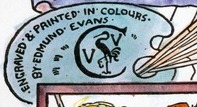

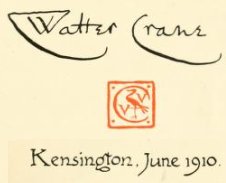 |
Une famille aimante, un père artiste, portraitiste
Son père a souvent eu recours à la technique des silhouettes
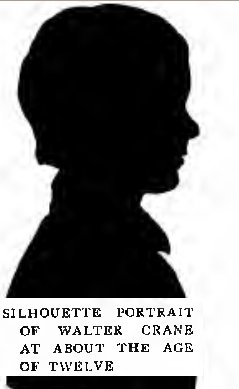
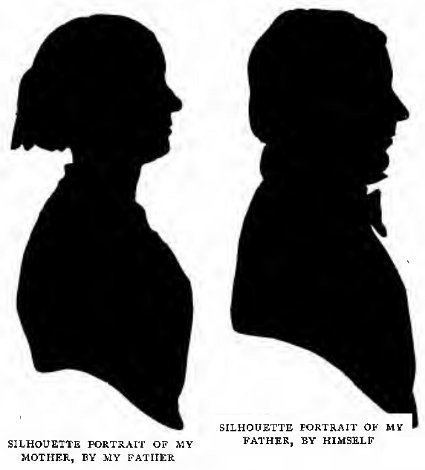
Des premiers chapitres, retenons notamment :
- un passage-éclair par l’école dont il n’a pas gardé de bons souvenirs, en particulier pour le calcul mental !!!
It is quite likely that one had acquired a sort of horror of schools from Dickens’s account of Mr. Squeers’s establishment, heightened by Cruikshank’s illustrations, for I certainly well remember we had that weel-known edition, and also the later ones illustrated by Phiz (Hablot K. Browne), many of which were first issued in parts in green paper covers.
- une passion pour le dessin d’animaux et de paysages d’après nature,
- une mémoire étonnante jointe à un vrai talent de portraitiste y compris en mots,
- une sensibilité aux détails ou à l’effet d’"ensemble" (il emploie le mot français)
- l’amour du rivage (douze ans près de Torquay),
Every year there was the Torbay Regatta, generally, I think, in August, for one associates it with bright hot weather. This was for us, perhaps, the great event of the year. The sound of brass bands was in the air from early morn, the ships in the harbour and bay gay from stern to stern with strings of hunting in all the colours of the rainbow. The quay was transformed, rows of yellow vans were drawn up along the edge of the quay with their backs to the harbour. Gorgeous pictures of fat women and strong men hung aloft.
There was a theatre with wonderful characters in costume (like those we used to buy lithographs upon sheets and jewelled, to be cut out for the toy stage) strutting about on the boards ; there was merry-go-rounds and shooting galleries, there were oranges and nuts, and innumerable seductive ways of getting rid of pocket-money.
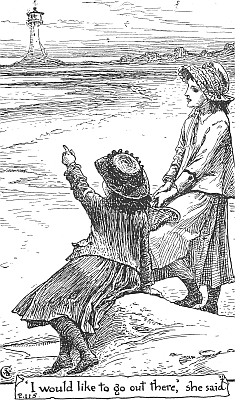
- Mrs Molesworth, Rectory children
- la découverte de la chevalerie.
But the pre-Rapahelites were then the newest sensation in the art world, and in this particular Academy show it was Millais’ famous picture of « St Isumbras Crossing the Ford » which I chiefly remember. It impressed me beyond words. To begin with, it had a horse in it – indeed, it was mostly horse, some people said. It was, however, much more. It was strikingly original : it was romantic, and was a very forcible and truthful piece of painting, and in a manner quite fresh to my youtful eyes.
Sa formation artistique
W-J. Linton l’a pris comme apprenti à 14 ans dans son atelier de "pic-verts", the woodpeckers, comme on appelait les graveurs sur bois en Angleterre. Les apprentis, simples d’esprit ou malentendants communicant par signes de doigts, portaient le nom de dummies. Il profite de ces années d’apprentissage pour dévorer des ouvrages de Ruskin et Turner pendant les longs trajets à pied,
At other times my companion was a book, as it was quite possible to read strolling along the quiet footpaths of the Park. I remember bearing along one by one the heavy volumes of Ruskin’s Modern Painters, which were obtained from Mudie’s, as my appetite had been whetted for more by reading the first and only volume my father possessed...
et pour dessiner des tas d’esquisses.
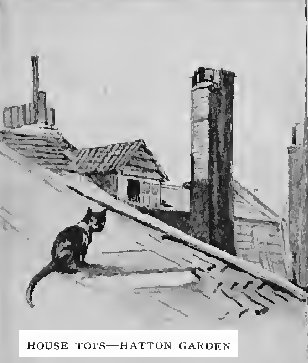

Il met aussi à profit ses missions à l’extérieur de l’atelier pour se lier à d’autres artistes ou pour engranger des observations de tout ordre.
Voici le portrait d’un camarade, "notre" Ernest GRISET, à 16 ans.
At the Gardens I made the acquaintance of several other students. Among these was Ernest Griset, who later acquired considerable fame as a very original and humorous draughtsman of animals and grotesque humans. His first important work was the illustration of an edition of Aesop’s Fables published by Messrs. Cassell, and Griset at one time had designs in Punch.
He was a lad of about sixteen when I knew him, very strongly built, with a distinctly French type of face, and having the peculiarity of being double-jointed in his thumbs. He was very fond, then, of drawing battle-scenes between Gauls and Romans, and used pen and ink with great skill and precision. His animal studies, too, were full of life and character, and he himself always vivacious and full of fun.
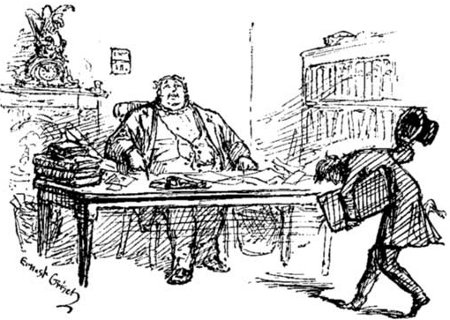
Il passe des heures
- au jardin zoologique à dessiner des animaux, et comme il le note :
The sheaves of studies of animals and birds which I made, no doubt gave me considerable facility in the drawing of animals and a memory of details of characteristics of their form.

- et dans les théâtres à dessiner des artistes, des décors, des détails d’ameublement.
En 1858, il "entre" dans l’histoire de l’art avec des illustrations d’un poème de Tennyson, The Lady of Shalot
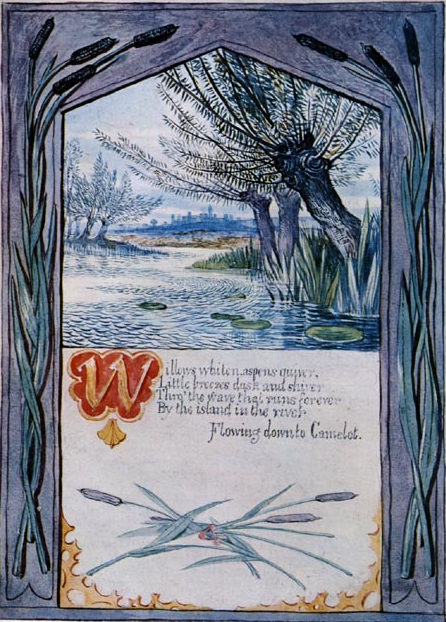
Willows whiten, aspens quiver
Little breezes dusk and shiver
Thro’ the wave that runs forever
By the island in the river
Flowing down to Camelot.
Une pointe d’humour vient souvent terminer ses mini-portraits, en pirouette, comme celui de cette vieille hôtesse d’un été le gavant de bonnes choses.
In the summer of 1861, with my mother, I remember spending a holiday in Chester, her birthplace. We stayed with a grandmother, or rather step-grandmother, a very hospitable old lady, with much shrewd observation and humour. She had had, no doubt, opportunities for the cultivation of such faculties, as she had been formerly landlady of one of the oldest of the Chester hostelries. Her hospitality, it is true, was apt to take the embarrassing form of loading one’s plate long after the capacity to assimilate more food had given in. « Cut it straight and eat it all, » she was fond of saying.
1862, c’est l’année de la grande exposition de Londres qui représente un véritable feu d’artifice de rencontres esthétiques pour Walter Crane.
The Exhibition was undoubtedly a big affair, and fave a good and comprehensive display of the art of the period. There was a splendid national and internation show of modern pictures. There was a very fine group, a representative groupe, of the pre-Raphaelite Brotherhood’s pictures, including some of Madox Brown’s fine works, such as the « King Lear » (the tent scene), the « English Autumn Afternoon, » and « The Emigrants. » All these I saw for the first time, and was immensely struck by them. Leighton’s « Cimabue’s Madonna carried through Florence » also I had never seen before, and was greatly taken by its graceful design and decorative effect. Among the French school the pictures which stand out most distinctly in my recollection were two famous works of Ingres « La Source, » and the splendid study of a nude youth sitting with bowed head in glowing sunlight against a pure blue sky, on a rock by the sea. Among one may almost say miles of pictures these remain in one’s memory as works of extraordinary force and distinction.
English decorative art, too, began to assert itself in this Exhibition. There was a most interesting group of furniture and examples of interior decoration of all kinds shown by the Ecclesiological Society, among which, I think, there was early work of J. Seddon, the architect, Pugin, William Burges, Philip Webb, William Morris, and E. Burne-Jones.
One saw in the work of these men the influence of the Gothic revival and the study of mediaeval art generally.
Randonnées pédestres estivales avec WISE en 1862 et 1863
Pendant ces semaines de découverte d’une forêt puis d’une vallée, la fréquentation quotidienne de J-R. Wise, son aîné de dix ans, lui apporte beaucoup au niveau intellectuel et artistique ... et une amitié solide. On peut trouver ses illustrations dans l’ouvrage : The New Forest, its History and Scenery by John R. Wise. 63 illustrations drawn by Walter Crane, engraved by W. J. Linton, Smith and Elder, London.
His real tastes, however, were scholastic. He was an extremely learned man, being a philologist, a naturalist, and an archaelogist ; and being wide-minded, and somtheing of a poet as well, he found interest and intellectual food everywhere.
Les jours de pluie, fréquents, Wise compose des ballades, Crane les illustre !!! et surtout il lui fait connaître The Conduct of Life d’Emerson qui lui permet de commencer à se débarrasser des superstitions religieuses environnantes, d’émerger de la caverne de l’obscurantisme chère à Platon.
My intellectual development owed much to him, certainly, and to him I was indebted for my first acquaintance with Emerson. I began The Conduct of Life, and found the optimist of Concord very stimulating reading. It had a bracing effect on my awakening thought, and helped to clear my mind from superstitious shadows and theologival bogies which at one time rather oppressed me, and even, under the influence of the impressive ritualistic services and aesthetic effects at All Saint’s, Margaret Street, and St Alban’s, Holbron, threatened to drive me into the arms of that section of the Church. But with the reading of Emerson new windows seemed to open to my mental vision and disclosed a wider prospect. It was like getting out into the fresh air and sunlight after the mysterious gloom and close atmosphere of a cavern.
Sa vision "sociale" des milieux qu’il côtoie s’affirme :
Another strata of the local society was represented by the proprietors of certain eedle factories in the village, which introduced the unpleasant elements of smoke and cinders there, and a somewhat reckless population of « hands. » Sheffield grinders, I was told, in those days had but a short life, the fine steel dust getting into their lungs, so they seldom lived longer tha about thirty years. It was not surprising that many of them were given to drink.
One did not hear much sympathy with the condition of the workers expressed by the proprietors of the mills, however.
Mais pas de remarque acérée quand il décrit le passe-temps favori des aristocrates campagnards qui l’accueillent.
Croquet was the favourite mawn game in the days, and keen were the struggles over the then comparatively wide hoops, and the vicissitudes of play on a sloping ground whereon many a summer afternoon was whiled away.
Il croque au passage de nombreux monuments historiques médiévaux, dont Haddon Hall
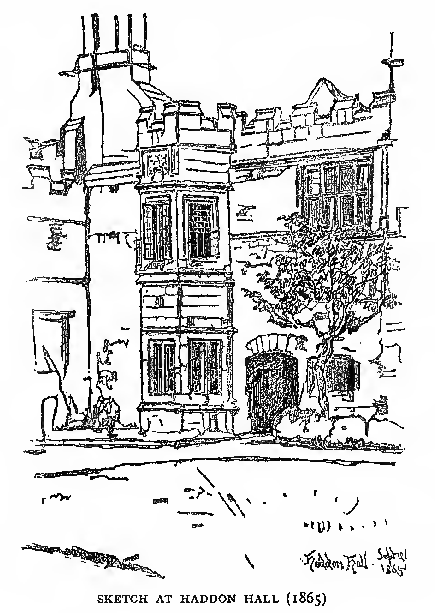
Il présentera trois ans plus tard une de ses esquisses paysagères dans un salon londonien, Twilight :
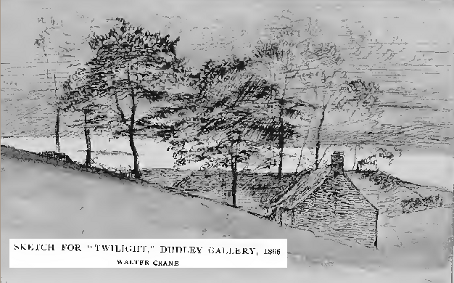
In the summer of 1863 I joined Mr. Wise again, but this time in Derbyshire, in a then remote valley of the Peak disctric, ten miled from Sheffield, a little place called Lead Mill, on the Derwent, near Hathersage, where by his usual plan of walking the country he had found lodgings, and a country that he liked. It had, indeed, very great charms, as well as very distinct character. On one side bold crags of gritstone, or « edges, » as they were called, beaking above green fields and woods sloping down to the Derwent, meandering over its stony bed, from running shallow into deep brown pools, dear to trout-fishers, and overhung with ashes, oaks, alders, and sycamores ; on another side opening out into cloughs and valleys leading up to larch woods and high moorlands, purple with heather, and here and there a grey stone seventeenth-century farmhouse. Far away to the wesr the ridges of the Peak hills and mountains above Castleton were lost in the blue mist.
Mais 1863, c’est aussi et surtout l’année de sa rencontre avec Edmund Evans et donc de ses débuts officiels dans l’illustration enfantine dont je parlerai dans un autre article.
Les traductions des passages en anglais vont arriver, promis...
Dans la même rubrique
7 janvier 2019 – Rose de l’an neuf
26 novembre 2018 – Gustave Doré in London in 1872
19 novembre 2018 – Marie-Madeleine Dauphin
20 janvier 2017 – Énigme policière dans la Ferme des Animaux
6 août 2016 – La Joie de vivre





